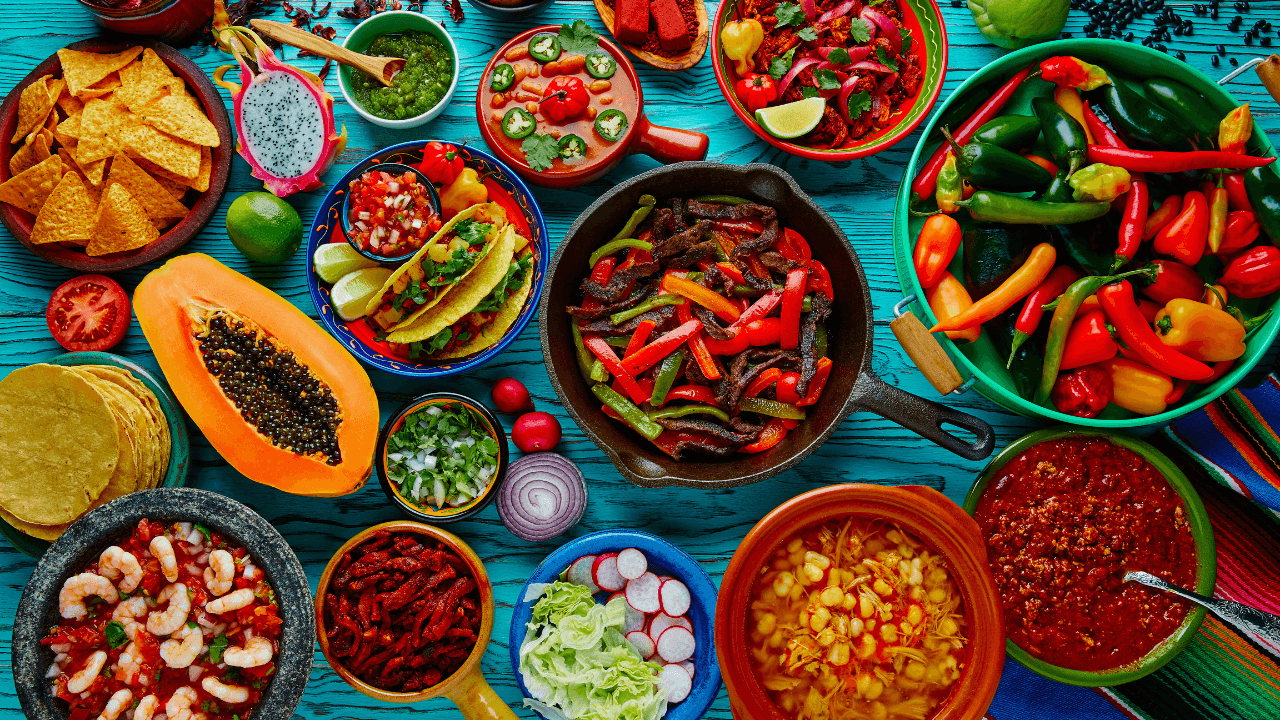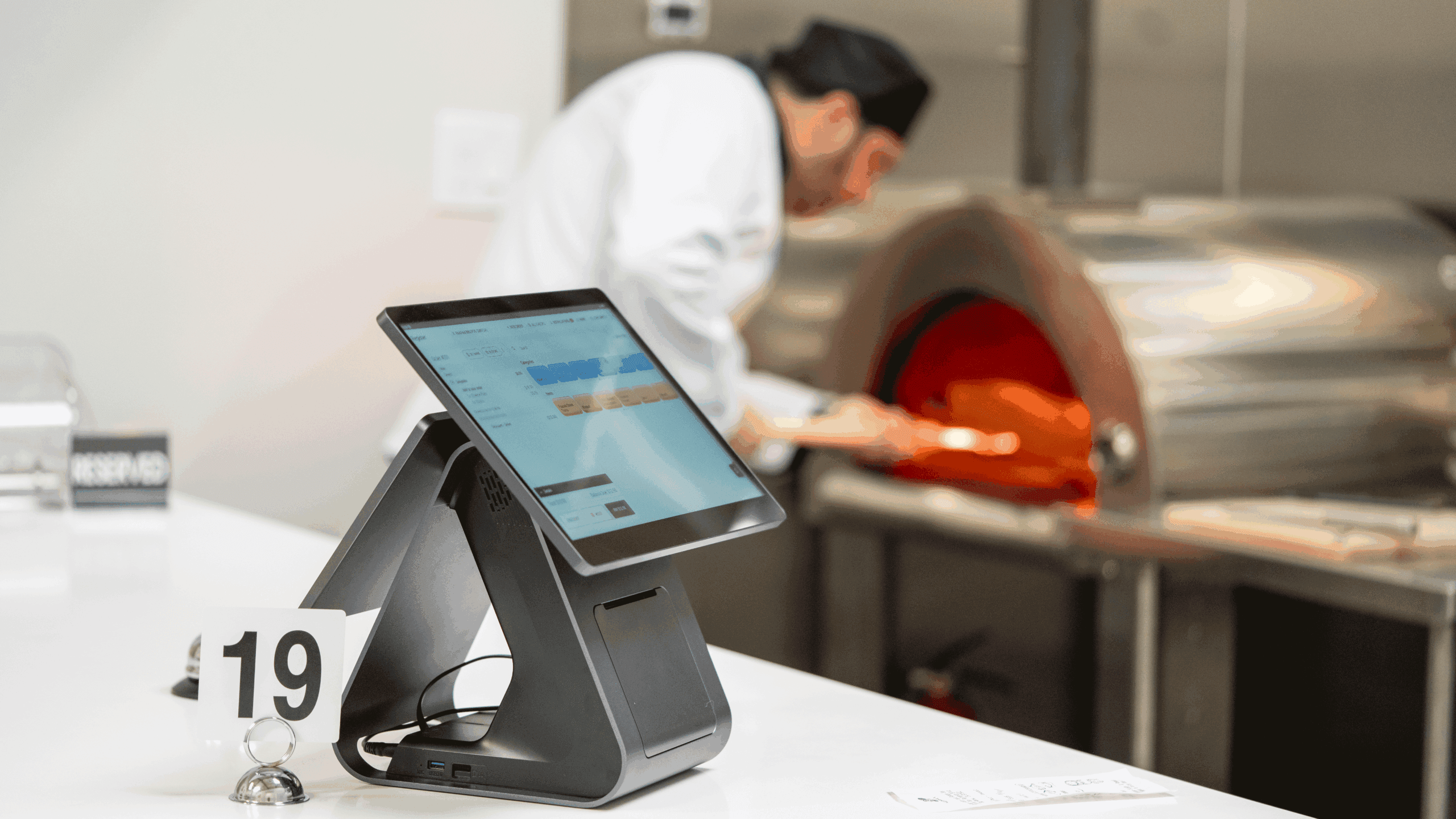- Global Market Drivers for Hispanic Food
- Why Mexican Food is Popular in the U.S.
- The Top Players in the Mexican Food Market in the U.S.
- Top Ways Consumers Enjoy Mexican Food
- How to Penetrate the Mexican Food Market
- Harnessing the Power of Order.co in the Mexican Food Market
Get ready to spice up your menus and ignite your customers’ taste buds as we dive into the world of Mexican cuisine!
From sizzling fajitas to zesty salsa, Mexican food brings a burst of flavor and tradition to every plate.
In 2020, a whopping 238.27 million Americans savored Mexican dishes, and the number is expected to stay strong until 2024.
As independent restaurant owners and managers, you’re at the forefront of the culinary scene, and there’s no better time to tap into the growing popularity of Mexican food.
Join us as we explore the trends and opportunities in this vibrant Mexican market, where every Mexican dish tells a delicious story.
Global Market Drivers for Hispanic Food
What’s the first place that comes to mind when you think of a Hispanic food chain?
Probably Taco Bell. Though it’s a successful chain, it barely scratches the surface of the rich Hispanic cuisine.
Understanding the key drivers behind the global affinity for Hispanic cuisine sheds light on its enduring popularity.
Here are the main reasons why Hispanic cuisine continues to thrive on the international stage:
Cultural Diversity and Fusion
Hispanic cuisine is a melting pot of diverse culinary traditions from various Latin American countries, each with unique flavors and ingredients.
This rich tapestry of influences creates a vibrant and dynamic culinary landscape that appeals to various tastes.
Flavor Profile
One of the most appealing aspects of Hispanic cuisine is its bold and vibrant flavor profile.
Here are a few examples:
- Chipotle Chicken Tinga
This Mexican dish features shredded chicken simmered in a tomato/ chipotle sauce, delivering a harmonious balance of smoky, spicy, and savory flavors. The chipotle peppers add depth and complexity to the dish, while the tangy acidity of the tomatoes provides a refreshing contrast.
- Ceviche
Originating from Peru but popular throughout Latin America, ceviche showcases the vibrant flavors of fresh seafood marinated in lime juice, cilantro, and chili peppers. The citrusy acidity of the lime juice “cooks” the seafood, while the cilantro and chili peppers add a burst of herbal freshness and subtle heat.
- Ropa Vieja
This Cuban dish features tender shredded beef stewed with tomatoes, bell peppers, onions, and spices. The savory richness of the beef is accompanied by the sweetness of the tomatoes and peppers, while the spices add layers of warmth and depth to the dish.
- Arroz con Gandules
A staple of Puerto Rican cuisine, this dish consists of rice cooked with pigeon peas, sofrito (a flavorful blend of onions, peppers, garlic, and herbs), and spices. The sofrito infuses the rice with aromatic flavors, while the pigeon peas add a nutty sweetness to the dish.
Why Mexican Food is Popular in the U.S.
About one in ten restaurants in the U.S. serves Mexican food, a staggering testament to the widespread popularity of this beloved cuisine.
The rise of Mexican food in the U.S. can be attributed to several key factors, each significantly contributing to its widespread appeal.
Let’s delve into why Mexican cuisine has become a staple of American dining:
Cultural Influence and Heritage
The influence of Mexican culture runs deep in the United States, dating back centuries to when Spanish explorers first set foot on American soil.
However, California’s integration into the United States during the 19th century played a big role in shaping the cultural landscape of Mexican cuisine within the country.
After the end of the Mexican-American War, California became a U.S. territory, leading to a significant influx of Mexican immigrants who suddenly found themselves living within the United States’s borders.
Through their enduring influence, Mexican Americans have preserved and celebrated Mexico’s rich culinary heritage, introducing Americans to different flavors, ingredients, and cooking techniques.
Immigration Trends
Over the years, the United States has seen a steady influx of immigrants from Mexico, shaping the culinary landscape and fueling the demand for authentic Mexican food.
As immigrants bring their culinary traditions with them, they introduce Americans to a diverse array of flavors and dishes, enriching the food scene and inspiring a newfound appreciation for Mexican cuisine.
Accessibility and Affordability
Mexican food is known for its accessibility and affordability, making it a popular choice for diners of all backgrounds.
From street tacos to hearty burritos, Mexican cuisine offers many options to suit every palate and budget.
Whether dining out at a taqueria or whipping up homemade enchiladas in the kitchen, Mexican food provides a delicious and economical way to satisfy hunger cravings.
Flavorful Diversity
One of the hallmarks of Mexican cuisine is its flavorful diversity. Each region boasts its unique culinary traditions and ingredients.
From the coastal areas of Baja California to the inland mountains of Oaxaca, Mexican food is very diverse in its essence.
This diversity ensures that there’s something for everyone to enjoy, whether craving spicy salsa verde or indulging in creamy mole poblano.
Culinary Innovation and Fusion
In recent years, Mexican cuisine has undergone a culinary renaissance, with chefs putting modern twists on traditional dishes and incorporating global influences into their menus. This culinary innovation has elevated Mexican food to new heights, appealing to a diverse audience of food enthusiasts eager to explore the boundaries of flavor and creativity.
One striking example of this innovation is the rise of gourmet taco carts and trucks across the United States.
Traditionally associated with street food culture, taco trucks have undergone a gourmet makeover.
Chefs infuse traditional recipes with high-quality, locally sourced ingredients and innovative flavor combinations.
By marrying traditional recipes with modern culinary techniques and global influences, gourmet taco trucks exemplify how Mexican cuisine continues to change and adapt to tastes and trends.
The Top Players in the Mexican Food Market in the U.S.
The Mexican food market in the United States is bustling with many players, ranging from traditional Mexican eateries to fast-casual chains and global food conglomerates.
Knowing the main players in this market is essential for gaining insights into its dynamics and identifying growth opportunities.
Here are some of the top players shaping the Mexican food market in the U.S.:
Chipotle Mexican Grill
Chipotle has emerged as a dominant force in the fast-casual dining sector. It is known for its customizable burritos, tacos, and bowls made with high-quality ingredients.
With a focus on both sustainability and ethical sourcing, Chipotle has garnered a loyal following among health-conscious consumers seeking fresh, flavorful Mexican-inspired fare.
Taco Bell
As one of the largest fast-food chains in the world, Taco Bell has become synonymous with Americanized Mexican cuisine.
Known for its affordable and indulgent menu offerings, including Doritos, Locos, Tacos, and Crunchwrap Supremes, Taco Bell appeals to a broad demographic of consumers looking for convenient and satisfying fast food options.
El Pollo Loco
El Pollo Loco has carved out a niche in the fast-casual dining segment, specializing in flame-grilled chicken and Mexican-inspired dishes.
With a focus on bold flavors and fresh ingredients, El Pollo Loco offers a healthier alternative to traditional fast food, appealing to consumers seeking flavorful and nutritious meal options.
Chili’s Grill & Bar
While not exclusively focused on Mexican cuisine, Chili’s Grill & Bar features a variety of Tex-Mex dishes on its menu, including fajitas, enchiladas, and quesadillas.
Chili’s casual dining atmosphere and extensive menu offerings appeal to families and groups looking for a relaxed dining experience with a Southwestern flair.
Local Taquerias and Authentic Mexican Restaurants
Beyond the realm of national chains, local taquerias and authentic Mexican restaurants play a significant role in shaping the Mexican food market in the U.S.
These establishments offer a diverse array of regional Mexican dishes, from street tacos and tamales to mole and ceviche, providing diners with an authentic taste of Mexico’s culinary heritage.
Food Manufacturers and Distributors
Behind the scenes, food manufacturers and distributors play a crucial role in supplying Mexican ingredients and prepared foods to restaurants, supermarkets, and other food service establishments across the country.
From tortillas and salsa to canned beans and spices, these companies ensure a steady supply of Mexican food products to meet consumer demand.
Top Ways Consumers Enjoy Mexican Food
Mexican cuisine’s versatility and rich flavors make it a favorite among consumers, who enjoy it in various forms and settings.
Understanding how people consume Mexican food provides valuable insights for restaurant owners looking to cater to consumer preferences.
Here are some of the top ways consumers enjoy Mexican food:
- Dining Out at Restaurants
One of the most popular ways consumers enjoy Mexican food is by dining out at restaurants. Restaurants allow consumers to indulge in freshly prepared dishes, savoring the flavors of Mexico without the hassle of cooking at home.
Examples include popular Mexican restaurant chains like Chipotle Mexican Grill, where customers can customize their burritos, tacos, and bowls with various fresh ingredients.
Another example is Rosa Mexicano, known for its upscale dining experience, which features modern Mexican cuisine and signature dishes like tableside guacamole.
- Takeout and Delivery
With the rise of online ordering platforms and food delivery services, takeout and delivery have become increasingly popular ways for consumers to enjoy Mexican food.
Consumers often turn to platforms like Uber Eats or DoorDash to order from their favorite Mexican restaurants in takeout and delivery.
For instance, a family might order a spread of tacos, enchiladas, and sides from their local taqueria for a convenient and delicious dinner at home.
- Home Cooking and Meal Prep
Many consumers enjoy cooking Mexican food at home, whether following traditional family recipes passed down through generations or experimenting with new flavors and ingredients.
Brands like HelloFresh and Blue Apron offer meal kits that include recipes and pre-portioned ingredients for cooking Mexican-inspired meals at home.
For example, HelloFresh might offer a recipe for chicken enchiladas with salsa verde and Mexican rice, providing all the ingredients needed to prepare the dish.
- Street Food and Food Trucks
Street food has long been a beloved part of Mexican food culture, offering an array of affordable and delicious snacks and meals enjoyed on the go.
Cities like Los Angeles and Austin are known for their vibrant food truck scenes. Trucks like Kogi BBQ in L.A. offer Korean-Mexican fusion tacos and burritos.
Another example is El Chilango in Washington, D.C., known for its authentic Mexican street food, including tacos al pastor and elotes (grilled corn).
- Frozen and Convenience Foods
For busy consumers looking for quick and convenient meal options, frozen and convenience foods provide a convenient way to enjoy Mexican flavors at home.
For instance, brands like Amy’s Kitchen offer frozen Mexican-inspired meals like organic black bean enchiladas and cheese tamale verde.
Additionally, grocery stores often carry canned and jarred Mexican ingredients from brands like Goya and Herdez, allowing consumers to add Mexican flavors to their home-cooked meals easily.
How to Penetrate the Mexican Food Market
Entering the Mexican food market can be daunting, especially considering its already crowded landscape.
However, with strategic planning and innovative approaches, businesses can successfully carve out their niche and thrive in this competitive industry.
Here’s a quick guide on how to penetrate the Mexican food market effectively:
Identify New Opportunities
Conduct market research to understand consumer preferences, upcoming trends, and gaps in the market.
For example, there may be a growing demand for plant-based Mexican options or a need for authentic regional cuisine that isn’t widely available in certain areas.
By identifying these opportunities, businesses can tailor their offerings to meet specific consumer needs and differentiate themselves from competitors.
Innovate and Differentiate
Restaurant businesses should focus on innovation and differentiation. This could involve creating unique menu items, incorporating unexpected flavor combinations, or experimenting with novel ingredients.
For example, a restaurant might offer a rotating selection of seasonal salsas made with locally sourced produce, or a food manufacturer might develop a line of gourmet Mexican-inspired snacks using ancient grains and superfoods.
By offering something new and exciting, businesses can attract customers looking for fresh and innovative dining experiences.
Utilize Next-Level Marketing Solutions
In today’s digital age, leveraging advanced marketing solutions, including artificial intelligence (AI), can give businesses a competitive edge.
AI-powered marketing tools can analyze customer data, predict consumer behavior, and personalize marketing messages to target specific audience segments more effectively.
For example, businesses can use AI chatbots to provide personalized recommendations and assistance to customers browsing their website or social media platforms.
Additionally, AI-driven analytics platforms can provide valuable insights into customer preferences and market trends, enabling restaurant businesses to make data-driven decisions and optimize their marketing strategies for maximum impact.
Embrace Social Media and Influencer Marketing
Social media platforms like Instagram, Facebook, and TikTok offer powerful tools for reaching and engaging with consumers in the Mexican food market.
Businesses can leverage these platforms to showcase their offerings, share behind-the-scenes content, and interact with customers in real-time.
Influencer marketing is another effective strategy for increasing brand visibility and credibility.
Collaborating with food influencers and bloggers who have a strong following in the Mexican food niche can help businesses reach a wider audience and build trust with potential customers.
Harnessing the Power of Order.co in the Mexican Food Market
Navigating the complexities of the restaurant industry can be challenging for aspiring restaurant owners looking to tap into the thriving Mexican food market.
However, with the right tools and strategies from Orders.co, turning your restaurant idea into reality becomes more achievable.
Here’s some of the benefits you’ll get:
1. Automated Email Campaigns
- Utilize our marketing solutions to automate email campaigns, keeping your customers engaged and informed about promotions, events, and menu updates.
2. Local SEO Optimization
- Enhance your restaurant’s online visibility with local SEO optimization, ensuring that potential customers can easily find and discover your establishment when searching online.
3. AI-Built Restaurant Website Creation
- Create your restaurant’s ordering site quickly and efficiently with our restaurant AI-built website builder, designed to provide a user-friendly experience for both you and your customers.
4. QR Code Menu Maker
- Simplify the menu scanning process for your customers with our QR code menu maker, allowing for quick and easy access to your menu from their smartphones.
And more!
Schedule a FREE demo call with Orders.co, and let us help you bring your Mexican restaurant vision to life!



